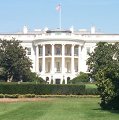Government Grants
Business Grants
Home Owner Programs
Federal Programs
About Us
FY25 Bureau of Land Management Plant Conservation and Restoration Management- Bureau wide
The BLM Plant Conservation and Restoration Program (PCRP) advances the Department of the Interior's priorities to protect human health and safety, unleashing American energy, and delivering price relief for American families by increasing the quantity of native seed that is available to stabilize
soils and protect human health and safety following wildfire, hurricanes, and other natural disasters, meet permitting requirements for energy development, and improving market availability of native seed through partnerships with farmers and small producers.
A primary purpose of the program is to increase the national native seed supply chain by working with private industry, federal, state, tribal and other partners.
BLM uses the native seed supply to maintain and restore multiple use and sustained yield on public lands including livestock grazing, timber production, wildlife habitat, recreational use, and orphaned well and abandoned mine land reclamation.
Improving native seed availability and stability in the market will lead to lower seed costs, lower risk incurred by producers, and more American jobs related to the native seed production pipeline.
Improving the native seed pipeline will also result in increasing project success, with reclamation projects meeting standards with long-term vegetative establishment and reduced noxious weed occurrence and grazing lands meeting land health standards, ultimately improving the health and benefits public lands provide for multiple use and sustainable yield.
In 2025 the PCRP is focused on meeting the priorities of the National Seed Strategy (www.blm.gov/seedstrategy) in ways that directly support department and administration priorities including:
public safety following catastrophic wildfire, economic development in rural communities, and empowering state resource stewardship partnerships on public lands.The BLM Plant Conservation and Restoration Program is especially focused on projects that:
1. Work with partners to make local seed collections that will be used to increase the diversity of native species available on the native seed market while at the same time fostering employment opportunities.
2. Support local farmers and non-profit organizations who wish to enter the native seed market and establish native seed production fields that will help support rural economies and foster shared environmental stewardship.
3. Support local nursery production of species that cannot be directly seeded to help support post natural disaster recovery and create jobs that will help support rural economies.
4. Generate the applied science needed to lower seed production costs, lower farmer risk, improve post fire stabilization project success and support sound agency decisions about the native seed supply chain.The BLM has opportunities to work with partner organizations to do activities such as:Work with state agency agriculture departments, the Natural Resource Conservation Service and other organizations to make it easier for small farmers to enter the commercial seed market.Work with state wildlife agencies, and other organizations to implement post fire stabilization and recovery projects; restore big game migration corridors; habitat for sage grouse, other priority species, wetlands, and riparian habitat.Develop the technology, expertise and capacity needed to collect, clean, grow and bank native species that industry has difficulty producing.Collect native seed from species and genotypes that are challenging to locate and harvest.Implement applied science and actions to maintain populations of special status plant species and prevent state and federal listing actions which could adversely affect mineral and energy development.Develop strategies to improve the use of native seed and plant materials for restoration and reclamation across all BLM associated programs such as Wildlife, Oil & Gas,Minerals, Fuels, Emergency Stabilization and Rehabilitation, Range, and Renewable Energy.
A primary purpose of the program is to increase the national native seed supply chain by working with private industry, federal, state, tribal and other partners.
BLM uses the native seed supply to maintain and restore multiple use and sustained yield on public lands including livestock grazing, timber production, wildlife habitat, recreational use, and orphaned well and abandoned mine land reclamation.
Improving native seed availability and stability in the market will lead to lower seed costs, lower risk incurred by producers, and more American jobs related to the native seed production pipeline.
Improving the native seed pipeline will also result in increasing project success, with reclamation projects meeting standards with long-term vegetative establishment and reduced noxious weed occurrence and grazing lands meeting land health standards, ultimately improving the health and benefits public lands provide for multiple use and sustainable yield.
In 2025 the PCRP is focused on meeting the priorities of the National Seed Strategy (www.blm.gov/seedstrategy) in ways that directly support department and administration priorities including:
public safety following catastrophic wildfire, economic development in rural communities, and empowering state resource stewardship partnerships on public lands.The BLM Plant Conservation and Restoration Program is especially focused on projects that:
1. Work with partners to make local seed collections that will be used to increase the diversity of native species available on the native seed market while at the same time fostering employment opportunities.
2. Support local farmers and non-profit organizations who wish to enter the native seed market and establish native seed production fields that will help support rural economies and foster shared environmental stewardship.
3. Support local nursery production of species that cannot be directly seeded to help support post natural disaster recovery and create jobs that will help support rural economies.
4. Generate the applied science needed to lower seed production costs, lower farmer risk, improve post fire stabilization project success and support sound agency decisions about the native seed supply chain.The BLM has opportunities to work with partner organizations to do activities such as:Work with state agency agriculture departments, the Natural Resource Conservation Service and other organizations to make it easier for small farmers to enter the commercial seed market.Work with state wildlife agencies, and other organizations to implement post fire stabilization and recovery projects; restore big game migration corridors; habitat for sage grouse, other priority species, wetlands, and riparian habitat.Develop the technology, expertise and capacity needed to collect, clean, grow and bank native species that industry has difficulty producing.Collect native seed from species and genotypes that are challenging to locate and harvest.Implement applied science and actions to maintain populations of special status plant species and prevent state and federal listing actions which could adversely affect mineral and energy development.Develop strategies to improve the use of native seed and plant materials for restoration and reclamation across all BLM associated programs such as Wildlife, Oil & Gas,Minerals, Fuels, Emergency Stabilization and Rehabilitation, Range, and Renewable Energy.
Who's Eligible
Obtain Full Opportunity Text:
Link to Opportunity in MyGrants
Additional Information of Eligibility:
Individuals and For-Profit Organizations are ineligible to apply for awards under this NOFO.This program NOFO does not support entities hiring interns or crews under the Public Lands Corps Act of 1993.
The Public Lands Corps Act of 1993, 16 USC, Chapter 37, Subchapter II-Public Lands Corps, is the only legislative authority that allows BLM to "hire" interns under this authority.
Therefore, eligible Youth Conservation Corps may only apply for projects developed under NOFO 15.243 – BLM Youth Conservation Opportunities on Public Lands.CESUs are partnerships with a purpose to promote, conduct, and provide research, studies, assessments, monitoring, technical assistance, and educational services.
If a cooperative agreement is awarded to a CESU partner under a formally negotiated Master CESU agreement which is consistent with the CESU purpose, indirect costs are limited to a rate of no-more-than 17.5 percent of the indirect cost base recognized in the partner's Federal Agency-approved Negotiated Indirect Cost Rate Agreement (NICRA).
Applicant"s should specify if their proposal furthers the purpose of the CESU program, and if so which CESU Network should be considered as host.
Full Opportunity Web Address:
https://mygrants.servicenowservices.com/mygrants?id=mygrants_form&table=x_g_usd4_o_grant_funding_opportunity&sys_id=472a62271bb9a210baa70fe4604bcbb1&view=Default
Contact:
Agency Email Description:
ydiaz@blm.gov
Agency Email:
Date Posted:
2025-06-23
Application Due Date:
Archive Date:
2025-08-22
Social Entrepreneurship
Spotlight
When it Comes to Social Enterprises, Failure is the Best Platform for Innovation

In the world of social enterprises, failure is a cringe-worthy moment nobody wants to talk about. But, social entrepreneurs can benefit from their failures.
